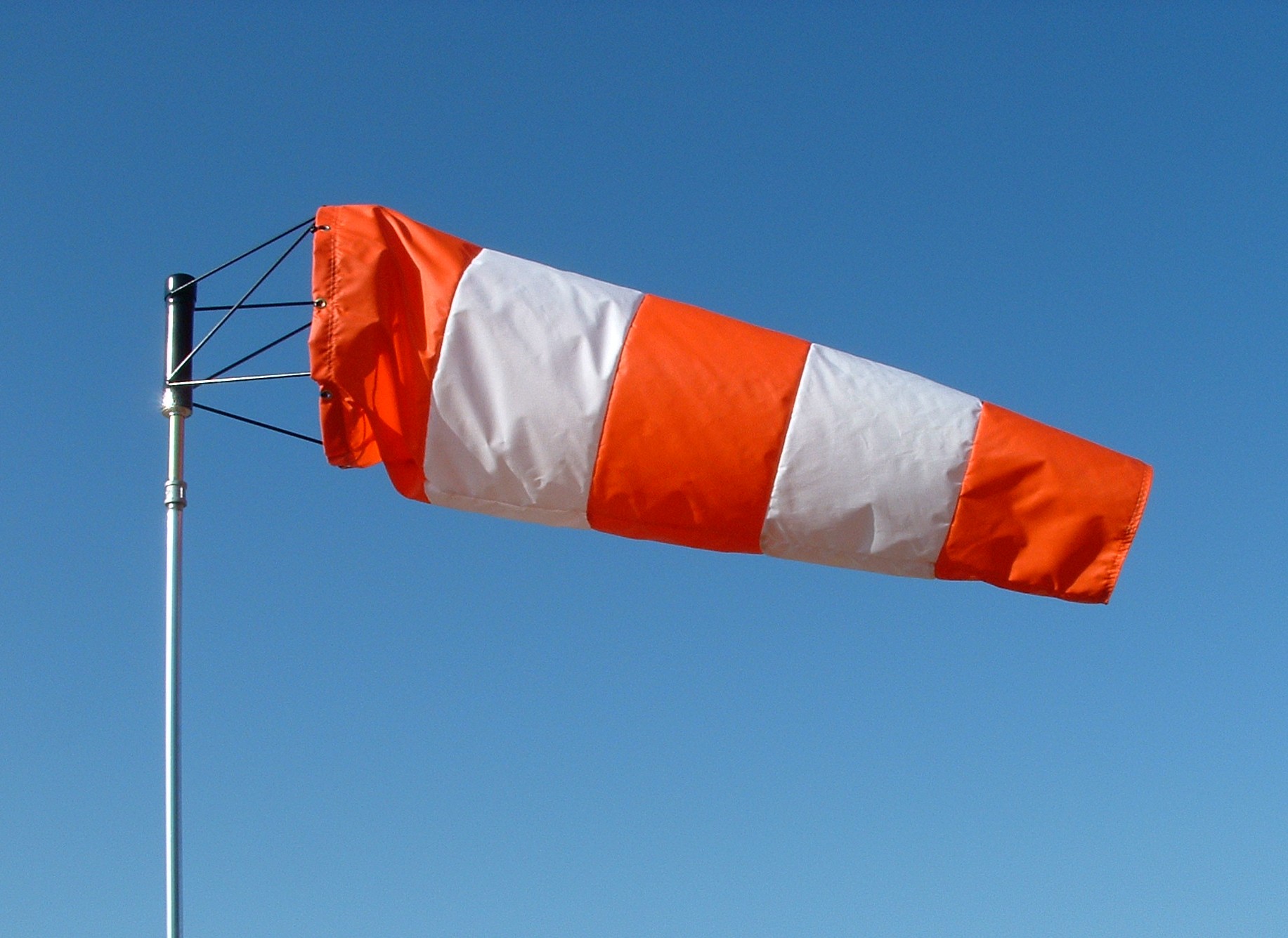by Captain Joe
What is a windsock and how does it work?
A windsock is a conical shape textile tube (which resembles a giant sock, hence its name) designed to indicate wind direction and relative wind speed.
It is normally placed next to the runway or a helipad, so that pilots can clearly see it after lining up on the runway or coming in for landing. It is also indicated on most airport ground charts with this little symbol.
During night operation it is well lit either from the ground or lamps installed within the sock.
Its general purpose is to give pilots a quick reference as to where the wind is coming from and the approximate speed. Before accelerating for take-off you take a quick glance at it, so you can give the necessary rudder inputs whilst rolling down the runway.
To determine the wind direction you look at your compass, check your heading, and then estimate the pointing angle of the windsock relative to your heading.
The wind direction is the opposite of the direction in which the windsock is pointing. Which means, if we had a wind blowing from the west at 270 degrees and 10 knots, the windsock would point towards heading east, cause of the direction it is blowing in.
But why does the sock have red and white rings ?
They are there to measure the wind velocity. Each ring indicates 5 knots of wind. So as we look at this video here, we have one, two rings fully blown up, and the last three are slightly tilted downwards, so that sums up to 2 rings times 5 knots, respectively wind speed of 10 knots.
But at the same time you can see that the sock sometimes is fully blown up and flapping about, so you could expect some gusts as well. In the background I can see the runway, knowing its heading of 260 degrees I assume that the sock is pretty parallel to it, so guess the wind direction will be approximately 260 degrees.
So let’s take a look at the ATIS read out.
So not to bad what we’ve estimated, 260 degrees 10 knots and gust, and if you compare that to the ATIS read out we got there fairly close. Again, a windsock is only for a quick reference, if you want a proper wind information you would have to listen to the ATIS or ask tower control.
So you can see, they are fairly easy to interpret and a great help to get a quick wind information.
They are easy to install and cheap to maintain.
It is required by flight regulations that even the smallest airport has at least one visible windsock.


Comments
One response to “How does a windsock work?”